Kastelli hill, Chania (1969–2014)
2020-06-30
The archaeological site of Agia Aikaterini square is located on the Kastelli hill in Chania, Crete, close to the harbour of the old town. Continuous human habitation from Neolithic times until today has been identified here, a period of about 5000 years, interrupted only between the end of the Bronze Age and the Late Geometric Period (c. 1150–735 BC). The site of the Late Minoan period may be identical with Kydonia, a place known from Linear B tablets. Besides uncovering an impressive urban settlement, the excavations at Chania have been important for two particular reasons. Firstly, they were the first to firmly identify an important Minoan centre on western Crete. Previously it had been believed that Minoan influence was limited the east half of the island. Secondly, the five Linear B tablets discovered in 1989–1990 were the only ones found outside of Knossos since the beginning of the 20th century.
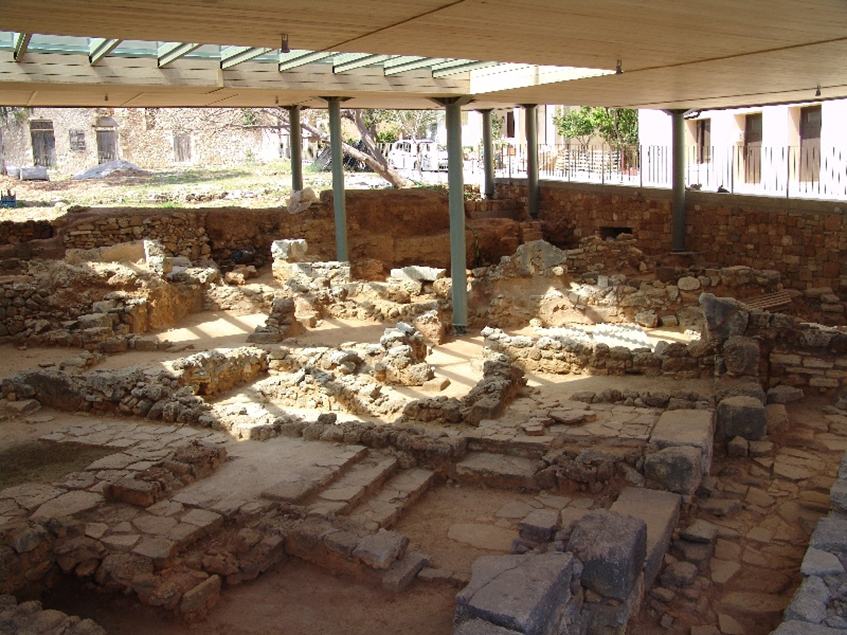
Fig. 2: Current state of the site.
Excavation history
The first finds at the Agia Aikaterini square in Chania were revealed in May 1941 when a German bomb hit the remains of the Venetian cathedral Santa Maria, exposing walls and Late Minoan pottery. More than 20 years later, in 1963, plans to construct a church in the still demolished area was halted when the British artist John Craxton reported Minoan sherds there. In 1964–1965 Yannis Tzedakis (former General Director of Antiquities, Ministry of Culture) opened trial trenches in the square, with systematic excavations in adjacent plots between 1966 and 1969. Looking for a collaborator Tzedakis turned to Carl-Gustaf Styrenius, director of the Swedish Institute at Athens, and in in 1969 they initiated a joint study. Two further trial trenches were opened in the square and systematic excavations began the year after. In 1970 and 1971 Tzedakis and Styrenius were joined by Pontus Hellström who assumed the position of field director for the Swedish Institute.
In 1973 Erik Hallager took over as field director for the Swedish side of the project. There was also a strong Danish involvement from this point onwards. And, importantly, the same year a Linear A archive was uncovered. Following a number of smaller campaigns and study seasons the next major fieldwork took place in 1977 when five new trenches were laid out. Between 1978 and 1987 further small campaigns and study seasons took place.
In 1989–1990 new Greek-Swedish excavations were initiated, revealing five Linear B tablets. Supplementary fieldwork was carried out in 2001 and in 2005 and 2008 long field seasons prepared the site for the erection of a protective roof.
In 2010 the Danish Institute at Athens joined the excavations until the last season of active fieldwork in 2014. During these years work was executed under the general direction of Yannis Tzedakis with Ann-Louise Schallin (The Swedish Institute) and Erik Hallager (The Danish Institute) as co-directors.
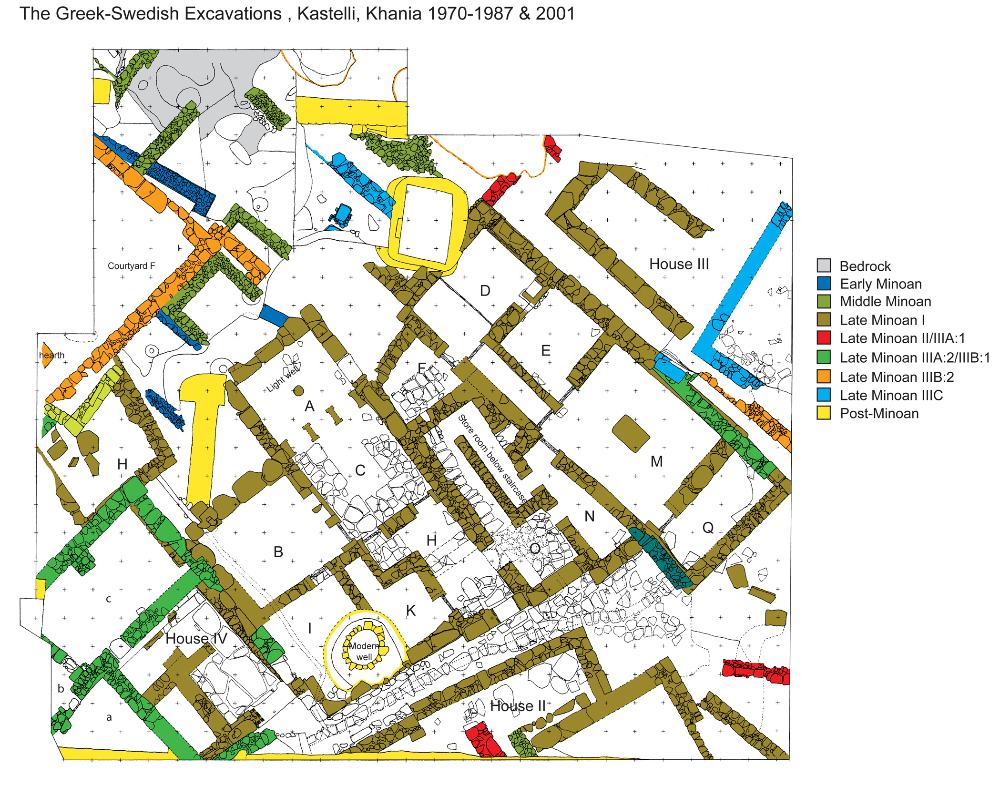
Fig. 3: Site plan with the various phases.
History and archaeology
The first traces of human activity at the Agia Aikaterini square is in the form of pottery dating to the transition between the Neolithic period and the Early Bronze Age. Following this there are remains of habitation from Early Minoan times (c. 3100–2100 BC) with well-built structures dating to EMII–III and MMIA (c. 2700–2100 BC and 2100–1900). Although there are no structural remains from the following Proto-Palatial period (c. 2000–1700 BC) habitation is attested through large amounts of pottery, such as Kamares pottery and eggshell ware, as well as stones with mason’s marks. At about 1700 BC the area was destroyed and the settlement was not rebuilt until Late Minoan IA (c. 1600 BC) when the Proto-Palatial structures were levelled. The most important discoveries at the site date from this Late Minoan time (c. 1600 BC–1070 BC) and the attested continuity of habitation throughout the period is exceptional.
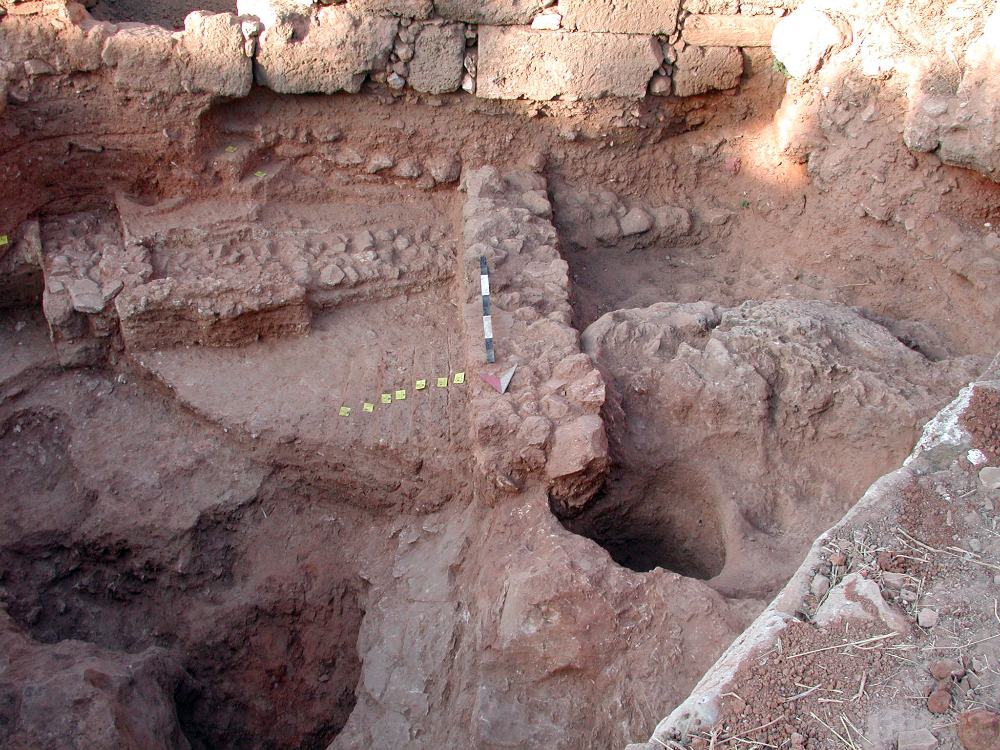
Fig. 4: Prepalatial (lower, c. 2600–2000 BC) and Protopalatial (upper, c. 2000–1700 BC) walls.
The Late Minoan IA settlement formed part of a town which was destroyed by fire in Late Minoan IB (c. 1480–1425 BC). The houses were built in blocks and divided by narrow streets and squares. House I measured 225 m² and an entrance hall accessed from the street led to the main room, the so-called Minoan Hall. From the entrance hall one could also enter a small lobby with a staircase to the first floor, or continue into a combined kitchen and workroom where the remains of a loom were discovered. The storeroom of the house was located next to the kitchen, and one of the vases found here contained 3 kg of burnt peas. In the same room two Linear A tablets were found. Next to the storeroom another room, probably a treasury, contained many decorated vessels, stone vases, seals, amulets, jewellery and sealings. The most spectacular find was a clay bar with twelve seal impressions. All in all, the house contained more than 300 complete vessels. Bordering House I to the southwest, lies House IV, where one of the upper rooms had been decorated with frescoes.
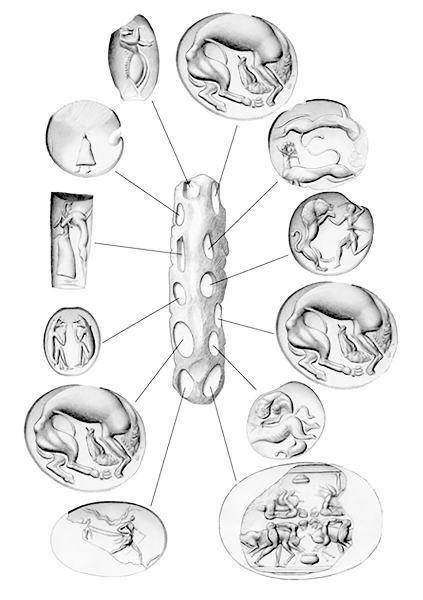
Fig. 5: Clay bar with twelve seal impressions, ten of which are different. From LM IB (c. 1480–1425 BC) destruction, House I, Room D.
After the Late Minoan IB destruction people returned and settled in the ruins. The famous so-called Master Impression, a seal imprint in clay, was discovered in a dump from this period. The compact scene depicts a city located on a rocky seaside, encircled by a wall with a double gate. Within the city a complex of multi-storied buildings crowned by horns of consecration can be seen. The composition is dominated by a large male figure in Minoan dress holding a sceptre or spear on top of the buildings.
Only in Late Minoan IIIA (c. 1390–1300 BC) new houses were built on the site. This habitation was destroyed by fire about a hundred years later, c. 1250 BC. From the destruction layer fragments of Linear B tablets were retrieved as well as many fragments of stirrup jars inscribed with Linear B signs. In this and the following period (Late Minoan IIIA and IIIB, c. 1390–1300 BC and 1300–1190 BC) the local Kydonian pottery workshop flourished, the products of which have been found all over Crete, in the Aegean and from Sardinia to Cyprus.
After the destruction around 1250 BC the settlement was quickly rebuilt again. This new phase largely used the older structures, with only a small number of new buildings. The houses also resemble those of the previous phase with large rooms, an upper floor and a large set fireplace. Another fire broke out c. 1200 BC after which the inhabitants yet again reconstructed their city, but now on a reduced scale and with smaller houses; some previous structures were reused and larger buildings were split up into smaller units with less rooms. The site never prospered as in earlier times and was slowly abandoned. By c. 1150 BC, no human activities or habitation can be traced. This seems to have been a peaceful process as no traces of violent destruction have been identified.
After the Bronze Age the site is abandoned for about 400 years until the Late Geometric I (c. 760–735 BC) period. From this point on the site was continuously inhabited until today, although the developments are mostly represented by isolated deposits and stray finds. This makes it difficult to produce a coherent picture of the site’s history. During Late Geometric I the old Minoan structures were reused. The excavations also revealed several floors as well as large pits with remains of vases and ovens in the shape of shallow pits (2.00–2.40 m in diameter) filled with ash. What was produced in these ovens is unknown, but associated floor layers contained large amounts of animal bones. The Late Geometric II (c. 735–700 BC) period is represented by large pits or rubbish deposits.
Only one significant deposit is known from the Early Archaic period: a large pit which contained much pottery and an arrow head. Following this a well datable to the Late Archaic period (525–480 BC) and then used in Classical times (480–323 BC) was located in the earlier Late Minoan I room N. A second well from the Hellenistic period, dug through the floor of Late Minoan IIIB:1 room H, was filled primarily with painted roof tiles. During Roman times an 18 m long ditch was dug in the southern part of the excavated area and filled at random with stones of varying size, many of them worked. The function of the ditch remains unknown. There are also stray finds from the entire Roman period, mainly amphora fragments.
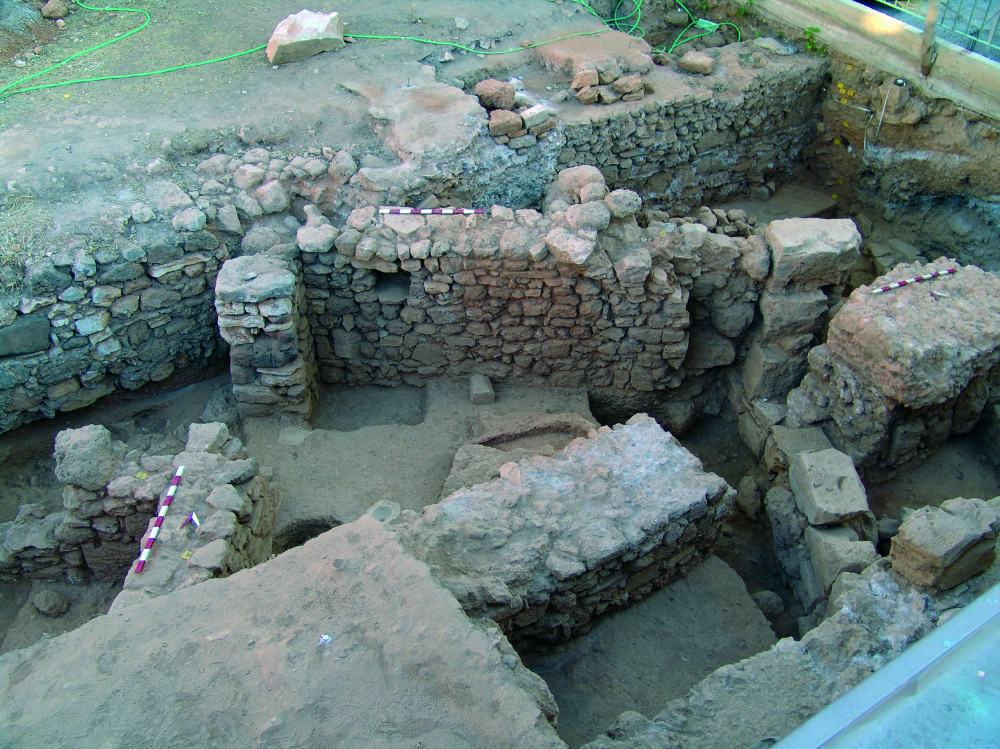
Fig. 6: Walls from the LM I, LM IIIA:2, LM IIIB:1, Byzantine, Venetian and Turkish periods, showing the complexity of the archaeology at the site.
After Roman times an Early Christian Basilica was built at the site. The building had three isles, and presumably an apse at the east end. The floors were decorated with mosaics as indicated by fragments found in several areas of the building. It is unknown when the basilica was destroyed, but the reuse of the foundations for a later Venetian Cathedral suggests that parts survived until that period. Tombs have been found inside the church, in one of which several individuals were interred, suggesting to the excavators that these were victims of an epidemic. During Ottoman times the Cathedral was converted into a mosque. Other traces from the Ottoman period include a Turkish coffee house in the southern area of the excavations.
During World War II the area around Agia Aikaterini square was heavily bombed and its buildings destroyed, including the remains of the Venetian cathedral. The ruins were levelled and the site covered, allowing the archaeological finds to remain undisturbed until excavations started.
Bibliography
Andreadaki-Vlazaki, M, 2004. ‘Η Κυδωνία της δυτικής Κρήτης στα πρώιμα χρόνια του σιδήρου’ in Το Αιγάιο στην πρώιμη εποχή του Σίδηρου, eds. N. Stampilidis & A. Giannikouri, Athens 2004, 21–34.
Andreadaki-Vlazaki, M, 2009. ‘Haghia Aikaterini Square, Greek-Swedish Excavations’ in Khania (Kydonia). A tour to sites of Ancient memory, Khania, 32–43.
Andreadaki-Vlazaki, M, & E. Hallager 2007. ‘New and unpublished Linear A and Linear B inscriptions from Khania’, PoDIA 5, 7–22.
Andreadaki-Vlazaki, M, & E. Hallager 2014. ‘Excavations at the Agia Aikaterini Square, Kastelli, Khania 2005 and 2008’, PoDIA VII, 195–208.
Andreadaki-Vlazaki, M, & E. Hallager 2018. ‘Some unpublished Linear A documents from Khania’, Kadmos 57, 33–44.
Chania 1:1 = Hallager, E, & B.P. Hallager 1997. The Greek-Swedish Excavations at the Ag. Aikaterini Square, Kastelli, Khania 1970-1987, vol I.1. Text. From the Geometric to the Modern Greek period (Skrifter utgivna av Svenska Institutet i Athen, 4o, 47:1:1), Stockholm.
Chania 1:2 = Hallager, E, & B.P. Hallager 1997. The Greek-Swedish Excavations at the Ag. Aikaterini Square, Kastelli, Khania 1970-1987, vol I.2. Plates. From the Geometric to the Modern Greek period (Skrifter utgivna av Svenska Institutet i Athen, 4o, 47:1:2), Stockholm.
Chania 2:1 = Hallager, E, & B.P. Hallager 2000. The Greek-Swedish Excavations at the Ag. Aikaterini Square, Kastelli, Khania 1970-1987, vol. II.1. Text. The Late Minoan IIIC settlement (Skrifter utgivna av Svenska Institutet i Athen, 4o, 47:2:1), Stockholm.
Chania 2:2 = Hallager, E, & B.P. Hallager 2000. The Greek-Swedish Excavations at the Ag. Aikaterini Square, Kastelli, Khania 1970-1987, vol. II.2. Plates. The Late Minoan IIIC settlement (Skrifter utgivna av Svenska Institutet i Athen, 4o, 47:2:2), Stockholm.
Chania 3:1 = Hallager, E, & B.P. Hallager 2003. The Greek-Swedish Excavations at the Ag. Aikaterini Square, Kastelli, Khania 1970-1987 and 2001, vol. III.1. Text. The Late Minoan IIIB:2 settlement (Skrifter utgivna av Svenska Institutet i Athen, 4o, 47:3:1), Stockholm.
Chania 3:2 = Hallager, E, & B.P. Hallager 2003. The Greek-Swedish Excavations at the Ag. Aikaterini Square, Kastelli, Khania 1970-1987 and 2001, vol. III.2. Plates. The Late Minoan IIIB:2 settlement (Skrifter utgivna av Svenska Institutet i Athen, 4o, 47:3:2), Stockholm.
Chania 4:1 = Hallager, E, & B.P. Hallager 2011. The Greek-Swedish Excavations at the Ag. Aikaterini Square, Kastelli, Khania 1970-1987 and 2001, vol. IV.1. Text. The Late Minoan IIIB:1 and IIIA:2 settlements (Skrifter utgivna av Svenska Institutet i Athen, 4o, 47:4:1), Stockholm.
Chania 4:2 = Hallager, E, & B.P. Hallager 2011. The Greek-Swedish Excavations at the Ag. Aikaterini Square, Kastelli, Khania 1970-1987 and 2001, vol. IV.2. Plates. The Late Minoan IIIB:1 and IIIA:2 settlements (Skrifter utgivna av Svenska Institutet i Athen, 4o, 47:4:2), Stockholm.
Chania 5:1 = Hallager, E, & B.P. Hallager 2016. The Greek-Swedish Excavations at the Ag. Aikaterini Square, Kastelli, Khania 1970-1987, 2001, 2005 and 2008, vol. V.1. Text. The Late Minoan IIIA:1 and II settlements (Skrifter utgivna av Svenska Institutet i Athen, 4o, 47:5:1), Stockholm.
Chania 5:2 = Hallager, E, & B.P. Hallager 2016. The Greek-Swedish Excavations at the Ag. Aikaterini Square, Kastelli, Khania 1970-1987, 2001, 2005 and 2008, vol. V.2. Plates. The Late Minoan IIIA:1 and II settlements (Skrifter utgivna av Svenska Institutet i Athen, 4o, 47:5:2), Stockholm.
Chania 6:1 = Hallager, E, & B.P. Hallager (in preparation). The Greek-Swedish Excavations at the Ag. Aikaterini Square, Kastelli, Khania 1970-1987, 2001, 2005 and 2008, vol. VI.1. Text. The Neopalatial settlement (Skrifter utgivna av Svenska Institutet i Athen, 4o, 47:6:1).
Chania 6:2 = Hallager, E, & B.P. Hallager (in preparation). The Greek-Swedish Excavations at the Ag. Aikaterini Square, Kastelli, Khania 1970-1987, 2001, 2005 and 2008, vol. VI.2. Plates. The Neopalatial settlement (Skrifter utgivna av Svenska Institutet i Athen, 4o, 47:6:2).
Chania 7:1 = Hallager, E, & B.P. Hallager (in preparation). The Greek-Swedish Excavations at the Ag. Aikaterini Square, Kastelli, Khania 1970-1987, 2001, 2005 and 2008, vol. VII.1. Text. The Pre- and Protopalatial settlements (Skrifter utgivna av Svenska Institutet i Athen, 4o, 47:7:1).
Chania 7:2 = Hallager, E, & B.P. Hallager (in preparation). The Greek-Swedish Excavations at the Ag. Aikaterini Square, Kastelli, Khania 1970-1987, 2001, 2005 and 2008, vol. VII.2. Plates. The Pre- and Protopalatial settlements (Skrifter utgivna av Svenska Institutet i Athen, 4o, 47:7:2).
Chania 8:1 = Hallager, E, & B.P. Hallager (in preparation). The Greek-Swedish Excavations at the Ag. Aikaterini Square, Kastelli, Khania 1970-1987, 2001, 2005 and 2008, vol. VIII.1. Text. Supplementary excavations 2001, 2005 and 2008 (Skrifter utgivna av Svenska Institutet i Athen, 4o, 47:8:1).
Chania 8:2 = Hallager, E, & B.P. Hallager (in preparation). The Greek-Swedish Excavations at the Ag. Aikaterini Square, Kastelli, Khania 1970-1987, 2001, 2005 and 2008, vol. VIII.2. Plates. Supplementary excavations 2001, 2005 and 2008 (Skrifter utgivna av Svenska Institutet i Athen, 4o, 47:8:2).
Hahn, M. 1988. ‘Parastasis amartolis gynaikas se khanata tis Anagennisis’, Kritiki Estia 2, 88–101.
Hahn, M. 1989. ‘Byzantine and Postbyzantine pottery from the Greek-Swedish excavations at Khania, Crete’, in Recherches sur la céramique byzantine (BCH, Suppl. 48), eds. V. Déroche & J.-M. Spieser, Paris, 227–232.
Hahn, M. 1990. ‘A group of 15th/16th cent. jugs from western Crete’, in Recent Danish research in classical archaeology. Tradition and renewal (ActaHyp, 3), eds. T. Fischer-Hansen, P. Guldager, J. Lund, M. Nielsen & A. Rathje, Copenhagen, 311–320.
Hahn, M. 1991. ‘Filterjugs and lampstands from the Turkish period at Khania’, in Acts of the 6th International Cretological Congress 1989, Khania, 77–82.
Hallager, B.P. 1977. ‘Mykensk import og mykensk indflydelse på Khania‑keramikken i LM III perioden i Khania’, appendix in Det senminoiske Kreta, E. Hallager, (Unpublished Licentiate thesis) Århus 1977, 235–237.
Hallager, B.P. 1983. ‘A new social class in Late Bronze Age Crete: foreign traders in Khania’, in Minoan Society. Proceedings of the Cambridge Colloquium 1981, eds O. Krzyszkowska & L. Nixon, Bristol, 111–120.
Hallager, B.P. 1985. ‘Crete and Italy in the Late Bronze Age III period’, AJA 89, 293–305.
Hallager, B.P. 1987. ‘Some LM IIIB:1 floor deposits at Khania, West Crete (summary)’, in Kolloquium zur Ägäischen Vorgeschichte, Mannheim 20.–22.2.1986 (Schriften des Deutschen Archäologen‑Verbandes, 9), Mannheim, 89.
Hallager, B.P. 1988. ‘Mycenaean pottery in the Late Minoan IIIA:1 Deposits in Khania’, in Problems in Greek Prehistory. Papers presented at the Centenary Conference of the British School at Athens, Manchester April 1986, eds. E.B. French & K.A. Wardle, Bristol, 173–183.
Hallager, B.P. 1990. ‘LM II and Khania’, in Proceedings of the 6th International Cretological Congress. Khania 1986, Khania, 77–84.
Hallager, B.P. 1994. ‘Myceaean pottery in Crete’, in Pottery as evidence for trade in the Aegean Bronze Age: 1939–1989. Conference sponsored by The Americal School of Classical Studies and The British School of Archaeology at Athens. December 2-3, 1989, eds. A.J.B. Wace & C.W. Blegen, Athens, 263–269.
Hallager, B.P. 1997. ‘The Late Minoan goblet, kylix and footed cup’, in Late Minoan III pottery. Chronology and terminology. Acts of a meeting held at the Danish Institute at Athens, August 12–14, 1994 (Monographs of the Danish Institute at Athens, 1), eds. E. Hallager & B.P. Hallager, Athens, 15–56.
Hallager, B.P. 1999. ‘A warrior and an unknown chariot type on a LM IIIB:2 krater in Khania’, in Polemos. Le contexte guerrier en Égée à l’age du Bronze (Aegaeum, 19), ed. R. Laffineur, Liège, 449–454.
Hallager, B.P. 2001. ‘The Rams in Cultic Contexts?’, Potnia. Deities and religion in the Aegean Bronze Age. Proceedings of the 8th international Aegean Conference Göteborg, Göteborg University, 12-15 April 2000 (Aegaeum, 22), eds. R. Laffineur & R. Hägg, Liège, 315–322.
Hallager, B.P. 2003. ‘Late Minoan IIIB:2 and Late Minoan IIIC pottery in Khania’, in LH IIIC chronology and synchronisms. Proceedings of the International workshop held at the Austrian Academy of Science at Vienna, May 7th and 9th, 2001, eds. S. Deger-Jalkotzy & M. Zavadil, Vienna, 105–116.
Hallager, B.P. 2005. ‘The synchronisms mainland – West Crete in the LMIIIA2–IIIB period’, in Ariadne’s threads. Connections between Crete and the Greek Mainland in Late Minoan III (LM IIIA2 to LM IIIC). Proceedings of the international workshop held at Athens, Scuola Archeologica Italiana, 5-6 April 2003 (Tripodes, 3), eds. A.L. DʼAgata, J.A. Moody & E. Williams, Athens, 277–292.
Hallager, B.P. 2009. ‘Domestic shrines in Late Minoan IIIA2–Late Minoan IIIC Crete: fact or fiction?’, in Archaeologies of cult essays on ritual and cult in Crete in honor of Geraldine C. Gesell (Hesperia, Suppl. 42), eds. A. L. D’Agata & A. Van de Moortel, Athens, 107–120.
Hallager, B.P. 2010. ‘The elusive Late IIIC and the ill-named Subminoan’, in Cretan offerings. Studies in honour of Peter Warren (BSA, Studies 18), ed. Olga Krzyszkowska London, 141–156.
Hallager, B.P. 2011. ‘Some light on LM III hand lamps’ in Proceedings of the 10th Cretological Congress (Chania, 1–8 October 2006). Vol A3, eds. Ε.G. Kapsomenos, Μ. Andreadaki-Vlazaki, Μ. Andrianakis & Ε. Papadopoulou, Chania, 71–80.
Hallager, B.P. & E. Hallager 1995, ‘The Knossian Bull – political propaganda in Neo-palatial Crete?’, in Politeia. Society and state in the Aegean Bronze Age. Proceedings of the 5th International Aegean Conference, University of Heidelberg, Archäologisches Institut 10-13 April 1994 (Aegaeum, 12), eds. R. Laffineur & W.-D. Niemeier, Liège, 547–556.
Hallager, B.P. & E. Hallager 2007. ‘Sealed clay stoppers from LH/LM III contexts’, in Stefanos Aristeios, Archälologische Forschungen zwischen Niel und Istros. Festschrift für Stefan Hiller zum 65. Geburstag, eds. F. Lang, C. Reinholdt & J. Weilhartner, Wien 2007, 143–148.
Hallager, B.P. & E. Hallager 2013. ‘A cylinder-shaped stand from Khania’ in Perspectives on ancient Greece. Papers in celebration of the 60th anniversary of the Swedish Institute at Athens, ed. Ann-Louise Schallin, Skrifter utgivna av svenska institutet i Athen, 8°, 22), Stockholm, 49– 59.
Hallager, E. 1972. ‘Fragments of Linear A tablets with new signs from Chania’, AAA 5, 508–510.
Hallager, E. 1973a. ‘Tablets and roundels from Khania with Linear A inscriptions’, Kadmos 12, 20–27.
Hallager, E. 1973b. ‘Minoan Kydonia. Excavations 1973’, AAA 6, 439–448.
Hallager, E. 1975. ‘Linear A and Linear B inscriptions from the excavations at Kastelli, Khania 1964–1972’, OpAth 11, 53–76.
Hallager, E. 1978. ‘Two Linear A tablets from the Greek‑Swedish excavations, Kastelli, Khania 1977’, SMEA 19, 35–47.
Hallager, E. 1980. ‘A new Linear A inscription from Khania’, Kadmos 19, 9–11.
Hallager, E. 1983. ‘The Greek‑Swedish excavations Kastelli, Khania 1980. The Linear B inscriptions’, AAA 16, 58–73.
Hallager, E. 1985. The Master Impression. A clay sealing from the Greek‑Swedish excavations at Kastelli, Khania (SIMA, 69), Göteborg.
Hallager, E. 1986. ‘The Greek‑Swedish Excavations at Khania’, in Proceedings of the Fifth International Cretological Congress at Ag. Nikolaos 1981, ed. T. Detorakis, Heraklion, 139–154.
Hallager, E. 1987a. ‘The inscribed stirrup jars. Implications for Late Minoan IIIB Crete’, AJA 91, 171–190.
Hallager, E. 1987b. ‘The Late Minoan IIIA:2 and IIIB periods in Khania (a summary) ’, in Kolloquium zur Ägäischen Vorgeschichte, Mannheim 20.–22.2.1986 (Schriften des Deutschen Archäologen‑Verbandes, 9), Mannheim, 88.
Hallager, E. 1988. ‘Khania and Late Minoan III Crete’, Cretan Studies 1, 115–124.
Hallager, E. 1990a. ‘Upper floors in Late Minoan I houses’, in Lʼhabitat égéen prehistorique. Actes de la Table Ronde dʼAthènes, 23‑25 juin 1987 (BCH, Suppl. 29), Paris, 281–292.
Hallager, E. 1990b. ‘Roundels among sealings in Minoan administration: a comprehensive analyses of function’, in Aegean seals, sealings and administration (Aegeaum, 5), ed. T.G. Palaima, Bruxelles, 121–147.
Hallager, E. 1996. The Minoan roundel – and other sealed documents in the Neopalatial Linear A administration I-II (Aegaeum, 14), Liège 1996.
Hallager, E. 1995. ‘Linear B: the Cretan scribal tradition’, in Proceedings of the 7th international Cretological Congress. Vol. A1, Rethymnon 1995, 383–392.
Hallager, E. 1997. ‘Architecture of the LM II/III settlement in Khania’, in La Crète mycénienne. Actes de la Table Ronde internationale organisée par l’École francaise d’Athènes (Athènes, 25--28 mars 1991) (BCH, Suppl. 30), eds. J. Driessen & A. Farnoux, Paris, 176–185.
Hallager, E. 2000. ‘New evidence for seal use in the Pre- and Protopalatial periods’ in Minoisch-mykenische Glyptik, Stil, Ikonographie, Funktion (CMS, Beiheft, 6), ed. W. Müller, Berlin, 97–105.
Hallager, E. 2001a. ‘A waste deposit from a LBA-shrine in Khania (?)’ in Potnia. Deities and religion in the Aegean Bronze Age. Proceedings of the 8th international Aegean Conference Göteborg, Göteborg University, 12-15 April 2000 (Aegaeum, 22), R. Laffineur & R. Hägg, Liege, 175–80.
Hallager, E. 2001b. ‘Sealing without seals – an explanation’ (working paper, electronically published, Centre for Cultural Research, University of Aarhus: www.hum.au.dk/cfk/pages/publications/eh/sealing_without_seals.htm), 3–16
Hallager, E. 2005. ‘The uniformity of seal use and sealing practice during the LH/LM III period’, in Ariadne’s threads. Connections between Crete and the Greek Mainland in Late Minoan III (LM IIIA2 to LM IIIC). Proceedings of the international workshop held at Athens, Scuola Archeologica Italiana, 5-6 April 2003 (Tripodes, 3), eds. A.L. DʼAgata, J.A. Moody & E. Williams, Athens, 243–275.
Hallager, E. 2008. ‘Some unpublished Linear A inscriptions’, in Colloquium Romanum, Atte del XII colloquio internazional de micenologia (Pasiphae, 1), eds. A. Sacconi, M. Del Freo, L. Godart & M. Negri, Pisa & Rome, 359–360.
Hallager, E. 2010. ‘Development of sealing practices in the Neopalatial period’, in Die Bedeutung der minoischen und mykenischen Glyptik (CMS, Beiheft 8), ed. W. Müller, Mainz, 205–212.
Hallager E. & B.P. Hallager 2015.’When the saints go marching in’, in Ein Minoer im Exil. Festschrift zum 65. Geburstag von Wolf-Dietrich Niuemeier (Universitätsforschungen zur Prähistorischen Archäologie, 188), eds. I. Kaiser, O. Kouka & D. Panagiotopoulos, Bonn, 99–124.
Hallager E. & B. Pålsson 1975. ‘A further fragment of Linear A from the Greek‑Swedish excavations at Kastelli, Khania’, AAA 8, 91–93.
Hallager, E. & Y. Tzedakis 1979. ‘The Greek‑Swedish excavations at Kastelli, Chania 1976 and 1977’, AAA 11, 31–46.
Hallager, E. & Y. Tzedakis 1982. ‘The Greek‑Swedish excavations at Kastelli, Khania (1978 and 1979)’, AAA 15, 21–30.
Hallager, E. & Y. Tzedakis 1983. ‘The Greek‑Swedish excavations at Kastelli, Khania 1980’, AAA 16, 3–17.
Hallager, E. & Y. Tzedakis 1984. ‘The Greek‑Swedish excavations at Kastelli, Khania 1982–1983’, AAA 17, 3–20.
Hallager, E. & Y. Tzedakis 1985. ‘The Greek‑Swedish excavations at Kastelli, Khania 1984’, AAA 18, 9–28.
Hallager, E. & Y. Tzedakis 1987a. ‘A clay‑sealing from the Greek‑Swedish excavations at Khania’, in The function of the Minoan Palaces. Proceedings of the Fourth International Symposium at the Swedish Institute at Athens, 10–16 June, 1984 (Skrifter utgivna av Svenska institutet i Athen, 4o, 35) eds. R. Hägg & N. Marinatos, Stockholm, 117–120.
Hallager, E. & Y. Tzedakis 1987b. ‘The Greek‑Swedish excavations at Kastelli, Khania 1987’, AAA 20, 11–26.
Hallager, E. & Y. Tzedakis 1990. ‘The Greek-Swedish excavations in the Kanevaro Street, Khania 1989’, manuscript for Kritiki Estia 4.
Hallager, E. & Y. Tzedakis 1988a. ‘The Greek-Swedish excavations at Kastelli, Khania. I. The 1989 excavation’, AAA 21, 15–29.
Hallager, E. & Y. Tzedakis 1988b. ‘The Greek-Swedish excavations at Kastelli, Khania. II. The 1990 excavation’, AAA 21, 30–55.
Hallager, E, Y. Tzedakis & M. Andreadaki-Vlazaki 2014a. ‘The Greek-Swedish excavations at Kastelli, Khania 2001: a preliminary report’, PoDIA 7, 175–194.
Hallager, E, Y. Tzedakis & M. Andreadaki-Vlazaki 2014b. ‘The Greek-Swedish-Danish excavations at Kastelli, Khania 2010: a preliminary report’, PoDIA 7, 209–220.
Hallager, E. & M. Vlasakis 1976. ‘KH inscriptions 1976’, AAA 9, 213–219.
Hallager, E. & M. Vlasakis 1984. ‘Two new roundels with Linear A from Khania’, Kadmos 23, 1–10.
Hallager, E. & M. Vlasakis 1986. ‘New evidence of Linear A archives from Khania’, Kadmos 25 (1986), 108–118.
Hallager, E. & M. Vlasakis 2017a. ‘The Greek-Swedish-Danish excavations 2013. A short preliminary report’, PoDIA 8, 265–280.
Hallager, E. & M. Vlasakis 2017b. ‘The Greek-Swedish-Danish excavations 2014. A preliminary report’, PoDIA 8, 281–292.
Hallager, E., M Vlasakis & B.P. Hallager 1990. ‘The first Linear B tablet(s) from Khania (with an epigraphical appendix by E. Hallager)’, Kadmos 29, 24–34.
Hallager, E., M Vlasakis & B.P. Hallager 1992. ‘New Linear B tablets from Khania’, Kadmos 31, 61–87.
Hallager, E. M. Vlasakis & M Markoylakis 1991. ‘New and hitherto unpublished Linear A documents from Kastelli, Khania’, Kadmos 30, 34–41.
Hellström, P. & C.-G. Styrenius 1971. ’Excavations at Khania, June 1970’, AAA, 223–224.
Olivier, J.P. 1993. ’KN 115 = KH 115. Un même scribe à Knossos et à la Canée au MR IIIB: du soupçon à la certitude’, BCH 127, 19– 33.
Persson, P.O. 1993. ‘Ure in Chania auf Kreta’, in Tier und Museum (Museum Alexander Koenig - Bonn, 3) 121–123.
Pini, I. 1992. ‘Chania-Kastelli, Äkaterini-Platz’, in CMS 5, Suppl. 1A, Berlin, 106–107 & 119–154.
Rathje, A. & J. Lund 1992. ‘Danes overseas – a short history, in Recent Danish Research in Classical Archaeology. Tradition and Renewal (ActaHyp, 3), eds. T. Fischer-Hansen, P. Guldager, J. Lund, M. Nielsen & A. Rathje, Copenhagen, 41.
Styrenius, C.G. 1971. ‘Excavations at Chania 1969’, OpAth 10, 1–7.
Styrenius, C.G. & Y. Tzedakis 1970. ‘Chania: a new Minoan centre’, AAA 3, 100–102.
Tzedakis, Y. 1972. ‘Anaskaphi Kastelliou Khanion’, AAA 5, 387–390.
Tzedakis, Y. 1992. ‘Kastelli’, in Témoignages archéologiques et épigraphiques en Crète occidentale du Néolithiques au Minoen Récent IIIB, eds. Godart, L. & Y. Tzedakis, Rome, 27–37
Tzedakis, Y., E. Hallager, M. Andreanaki-Vlasaki 1989. ‘Proistorikes kai klasikes archaiotites. Poli Khanion’, Kritiki Estia 2, 275–277;.
Tzedakis, Y., E. Hallager, M. Andreanaki-Vlasaki 1991. ‘Proistorikes kai klasikes archaiotites. Poli Khanion’, Kritiki Estia 4, 199–202.
Vlasakis, M. 1980. ‘Oi anaskaphes sto lofo ʼKastelliʼ tis polis ton Khanion’, Xανιά, 59–63.
Vlasakis, M. 1983. ‘Khania (s.v.)’ in Megali Sovietiki Encyclopedia.
Vlasakis, M. 1991. ‘The Khania area, ca. 1200–700 B.C.’, in La transizione dal miceneo allʼalto arcaismo. Dal palazzo alla città, eds. D. Musti, A. Sacconi, L. Rocchi, L. Rocchetti, R. Scafa, L.M. Sportiello & M.E. Giannotta, Roma, 403–423.
Vlasakis, M. & E. Hallager 1995. ‘Evidence for Seal-use in Prepalatial Crete’, in Sceaux minoens et myceniens. Chronologie, Fonction et Interprétation (CMS, Beiheft 5), Berlin, 251–270.
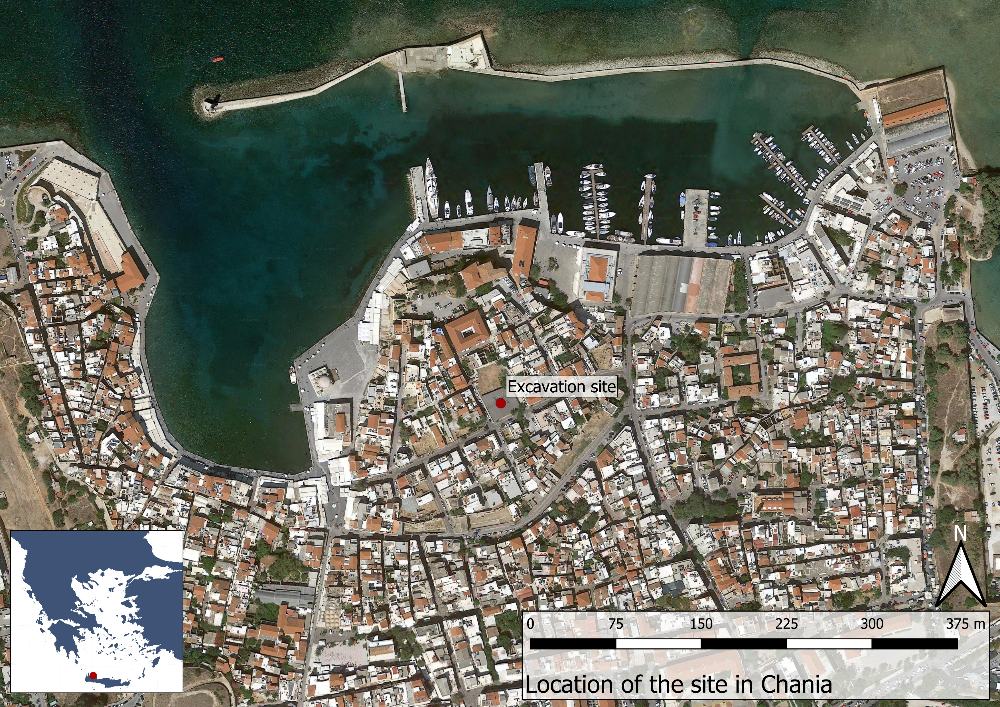
Fig. 1: Map over the site of Chania with site indicated (Basemap: Google maps satellite image).
Printed: 2025-12-13
From the web page: Swedish Institute at Athens
https://www.sia.gr/en/sx_PrintPage.php?tid=366